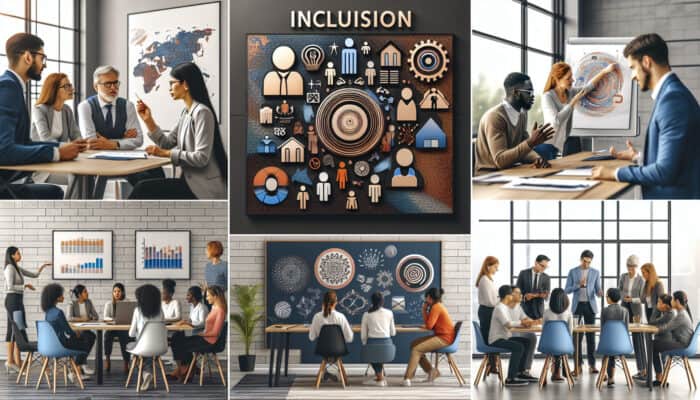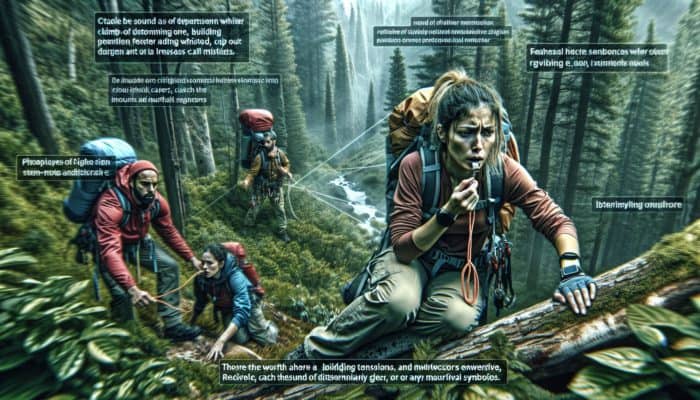Understanding the Impact of East London School Zones on Real Estate Values
Key Characteristics That Define School Zones in East London

East London school zones are defined geographical areas that encompass educational institutions, which are crucial in shaping the local property market landscape. These zones play an essential role in urban planning, particularly within South Africa, and are characterized by their proximity to reputable schools. For families, the quality of education offered by these schools is a key consideration when selecting a place to live. The educational standards not only enhance the desirability of the surrounding neighborhoods but also significantly elevate the market value of properties within these zones, making them highly sought after by potential homebuyers.
There exists a well-documented correlation between property values and the quality of education available; as families increasingly prioritize homes near esteemed schools, the demand for housing in these zones correspondingly surges. The educational landscape of East London illustrates the profound influence of school zones on real estate dynamics. With urban growth and rising population numbers, it is critical for both homebuyers and investors to comprehend how these school zones directly affect property valuations.
Exploring the Historical Evolution of School Zones in East London
The concept of school zones in East London originated in the early 20th century, coinciding with significant urban expansion and educational reforms. Initially, the zoning process was quite informal, often dictated by the geographic placement of schools and the requirements of the local communities. As East London developed, regulations governing school zones became more structured and formalized. The growing demand for quality education led to the introduction of official zoning policies aimed at improving the educational landscape.
As educational standards rose and new schools were established, the impact on real estate became increasingly evident. Neighborhoods situated close to high-performing schools experienced substantial increases in property values, while areas farther away struggled to remain competitive in the market. This historical context is vital for grasping current property trends, as it showcases how the development of educational policies and community planning has shaped real estate dynamics in East London.
The Relationship Between School Zones and Property Values in East London
Being in close proximity to esteemed educational institutions significantly enhances property values, a trend particularly observable in East London. Families are often willing to pay a premium for homes located within desirable school zones, motivated by the perceived benefits of high-quality education for their children. This trend is not merely anecdotal; it reflects a tangible market reality where educational access directly translates into higher financial returns for homeowners.
Several factors contribute to this phenomenon, including the school’s reputation, available facilities, and the demographic composition of the surrounding community. For instance, properties near schools with strong academic records and diverse extracurricular offerings typically experience greater appreciation in value. Conversely, homes located farther from such institutions may see stagnant growth. As East London continues to progress in its educational initiatives, understanding the complexities of school zones becomes essential for anyone navigating the local property market.
Strategies for Leveraging East London School Zones to Enhance Property Value

Essential Factors Experts Consider When Valuating School Zones
When evaluating the impact of school zones on property values, experts consider a variety of factors that collectively shape an area’s appeal. Recognizing these elements equips homeowners and investors with crucial insights into property valuation and investment potential. Some of the critical aspects include:
- School Reputation: Institutions renowned for high academic performance and positive public perception naturally attract families seeking quality education.
- Facilities Available: Resources such as libraries, sports amenities, and extracurricular activities enhance a school’s appeal and contribute to property desirability.
- Community Demographics: The characteristics of the local population, including socioeconomic status and family structures, significantly impact property values.
- Accessibility: Proximity to transportation links and essential services can enhance the desirability of properties within a school zone.
- Future Development Plans: Anticipated growth in educational facilities or urban development can positively influence long-term property value.
- Safety and Security: Areas perceived as safe are more attractive to families looking to invest in properties.
- Historical Value Trends: Past performance of property values in relation to school zones can provide predictive insights for future investments.
- Local Involvement: Active community engagement is often linked to better school performance and a supportive environment.
By considering these factors, property owners in East London can gain valuable insights into how school zones influence their home values. This knowledge is essential for making informed investment choices and enhancing the overall value of their properties.
Effective Strategies for Property Owners to Maximize Value in School Zones
Property owners in East London have numerous opportunities to capitalize on the benefits of being located within school zones. To maximize the value of their homes, owners can implement several actionable strategies. These initiatives not only enhance property appeal but also contribute to a more engaging community atmosphere. Key strategies include:
- Investing in Home Improvements: Upgrading both the interiors and exteriors of a home can significantly boost its desirability and market value.
- Engaging with the Community: Active participation in local events and initiatives fosters a sense of belonging and strengthens community ties.
- Highlighting Educational Proximity: Promoting the educational benefits of living near reputable schools can effectively attract potential buyers.
- Maintaining Property Standards: Regular upkeep and landscaping enhance curb appeal, making homes more inviting to prospective buyers.
- Networking with Local Schools: Building relationships with schools can provide insights and opportunities for community involvement.
- Creating Family-Friendly Spaces: Adding features like play areas or gardens can attract families in search of suitable homes.
- Utilizing Local Resources: Leveraging nearby services and amenities can significantly enhance the living experience for families.
- Staying Informed: Keeping updated on changes in school performance and community dynamics can guide proactive adjustments to property management strategies.
By implementing these strategies, property owners in East London can significantly increase their home values, making their properties more appealing to prospective buyers and renters alike.
Anticipating Future Trends in East London School Zones

Experts forecast that the significance of school zones in East London will continue to grow, particularly as educational quality increasingly influences property investment decisions. As families prioritize education in their home-buying criteria, the demand for homes situated within desirable school zones is expected to rise. This trend is reinforced by the growing acknowledgment of the connection between educational outcomes and long-term success for children, prompting parents to invest in neighborhoods known for academic excellence.
Emerging trends include a heightened focus on integrating educational facilities within residential developments, as developers aim to attract families seeking convenient access to schools. Furthermore, potential policy changes aimed at enhancing educational standards may further increase the attractiveness of specific school zones. As local governments commit to improving educational infrastructure, properties in these areas could see significant appreciation in value.
Another trend involves a growing emphasis on community involvement and engagement in local schools. Parents and residents are becoming increasingly active in school activities, fostering relationships that elevate the status of local schools and, consequently, the property values in surrounding areas. This engagement not only contributes to improved educational outcomes but also strengthens community ties, creating a virtuous cycle that enhances property desirability.
Advantages of Investing in Properties Within East London School Zones
Understanding How School Zones Enhance Property Appeal for Buyers
Homes located near top-rated schools in East London frequently experience increased attractiveness, resulting in faster sales and higher selling prices. The primary motivation for this heightened demand is the prospect of superior educational opportunities for children, a priority for many families. Living close to reputable educational institutions not only reflects a commitment to quality education but also elevates the overall appeal of the neighborhood.
This attractiveness is further amplified by the belief that residing near high-performing schools contributes to an enhanced quality of life. Families are increasingly inclined to invest in properties that support their children’s education, believing these environments foster academic success and personal growth. Consequently, homes within desirable school zones are often marketed with a strong emphasis on their educational advantages, thereby providing a competitive edge in the real estate market.
Moreover, the presence of quality schools can significantly shape the demographic profile of a neighborhood. Areas with reputable schools typically attract families seeking stability and community involvement, further enhancing the desirability of the area. Thus, investing in properties situated near high-performing schools in East London is not merely a financial choice; it represents a lifestyle decision that resonates with families who prioritize education.
The Role of School Zones in Enhancing Community Quality of Life
Living close to high-quality schools can greatly enrich the quality of life within a community. In East London, school zones foster increased community cohesion and safety, as families often engage more actively in local events, activities, and initiatives. The presence of families creates a vibrant atmosphere, nurturing friendships and support networks that benefit both children and adults alike.
Additionally, communities surrounding reputable schools typically experience lower crime rates and a heightened sense of safety. Parents become more invested in their neighborhoods, cultivating a stronger sense of community responsibility and involvement. This dedication often translates into better-maintained public spaces and communal facilities, creating an environment that is not only appealing to families but advantageous for all residents.
Furthermore, schools that offer extracurricular programs can serve as community hubs, bringing people together and encouraging participation in local events. Such engagement fosters a sense of belonging and pride among residents, which can further enhance property values and the overall attractiveness of the community. Ultimately, the relationship between school zones and community quality of life is profound, with each aspect reinforcing the other.
Long-Term Investment Benefits of Properties in School Zones
Investing in properties located within East London school zones can provide substantial long-term benefits, including capital appreciation and reliable rental income. Areas with high-performing schools typically maintain consistent demand, as families continue to seek residences that offer quality education for their children. This ongoing interest leads to property value increases over time.
Additionally, homes within these zones generally attract a dependable tenant pool, ensuring steady rental income for investors. Families prioritizing education are often willing to pay a premium for homes situated close to reputable schools, providing landlords with a consistent revenue stream. This stability is a crucial component of an investor’s long-term strategy, helping to mitigate risks associated with market fluctuations.
Moreover, the high demand for homes in school zones can result in competitive bidding situations, often driving prices up and enhancing an investor’s return on investment. By focusing on properties within sought-after school zones, investors can strategically position themselves in the market, capitalizing on the escalating importance of education as a key driver behind property values.
The Impact of School Zones on Property Rental Demand
Properties situated in school zones in East London frequently witness heightened rental demand, particularly from families prioritizing education. Parents are often willing to pay more for homes located near esteemed schools, as this proximity ensures convenience and reflects the available educational opportunities for their children. This trend is especially marked in East London, where the competition for quality education is intense.
Consequently, rental yields in these areas can be significantly higher than in locations further away from schools. Investors can take advantage of this demand by acquiring properties within school zones, ensuring consistent occupancy rates and dependable income streams. Additionally, families often seek long-term leases, providing landlords with additional security and peace of mind.
The increased rental demand further encourages property owners to maintain and enhance their properties, creating a positive cycle that boosts property values. As more families strive to secure homes in desirable school zones, the overall rental market becomes more competitive, leading to sustained growth in rental prices and investment potential. Given that education remains a top priority for families, the influence of school zones on property rental demand is a significant factor to consider.
Research Insights on East London School Zones: Boosting Mid-Level Property Values
Findings from Studies on the Connection Between School Zones and Property Values
Research continually highlights a tangible connection between school zones in East London and rising property values. Numerous studies reveal how proximity to high-quality educational institutions drives both demand and prices in the surrounding areas. The findings often indicate that families are willing to invest more in homes located near schools with strong academic records, viewing this as an investment in their children’s futures.
Additionally, studies explore the broader implications of these trends on community development. Improved educational outcomes correlate with increasing property values, creating a cycle of growth and enhancement within these neighborhoods. As families flock to areas with reputable schools, local businesses also benefit from heightened foot traffic, nurturing a robust economic environment.
These insights provide vital context for both homeowners and investors. As the educational landscape evolves, the value associated with school zones will likely remain a significant driving factor in East London’s property market, making it essential for stakeholders to stay informed about these dynamics.
The Influence of Educational Quality on Property Prices
The quality of schools in East London has a direct and positive effect on property prices in their vicinity. Families are increasingly aware of the connection between educational quality and their children’s success, leading them to prioritize homes located near high-performing schools. This preference creates a ripple effect, whereby properties in close proximity to distinguished educational institutions experience significant increases in value.
High-quality schools often boast excellent academic records, well-trained staff, and diverse extracurricular programs, rendering them highly attractive to prospective residents. The desirability of living near such institutions is not solely about convenience; it fundamentally revolves around securing a better future for children. Consequently, properties within these zones are often viewed as more valuable investments.
This dynamic contributes to a competitive housing market, where buyers are willing to pay a premium for homes near reputable schools. As demand continues to outstrip supply in these sought-after areas, property values are likely to appreciate, reinforcing the notion that educational quality is an essential consideration in property investment decisions.
Economic Analyses of School Zones: Implications for Property Values
Economic analyses of East London illustrate that school zones significantly contribute to local economic growth by attracting families and businesses. Areas with esteemed schools experience heightened demand for housing, which directly correlates with increased property values. As families settle in these regions, the local economy benefits from their spending power, further driving demand for goods and services.
Moreover, the presence of high-quality schools often stimulates community investment. As property values rise, local governments frequently allocate resources to further enhance educational facilities and community infrastructure. This cycle of investment creates a positive feedback loop: improved schools attract more families, leading to increased property values and further community development.
Economic analyses suggest that investing in properties located within strong school zones is not just prudent; it is a strategic move that capitalizes on the interplay between education, property values, and local economic vitality. As East London continues to evolve, the impact of school zones on the economic landscape is likely to become even more pronounced.
Strategies for Capitalizing on East London School Zones to Boost Property Values
Effective Marketing Techniques for Properties within School Zones
Successfully marketing properties located within East London school zones requires a strategic approach that emphasizes the unique benefits of these locations. Highlighting proximity to quality schools in listings and advertisements can significantly enhance a property’s appeal. Potential buyers are often motivated by the educational opportunities available to their children, making this information crucial in marketing campaigns.
Additionally, utilizing various platforms to showcase these advantages is essential. Social media, local community boards, and real estate websites can serve as effective channels for reaching prospective buyers. Incorporating testimonials from families residing in the area can provide credibility and attract attention, showcasing the positive experiences associated with living near reputable schools.
Additional strategies include hosting open houses during school events or community gatherings, allowing potential buyers to experience the neighborhood atmosphere firsthand. Providing detailed information about schools, including academic performance statistics and extracurricular offerings, can further entice buyers. Highlighting community engagement initiatives can illustrate the vibrant environment surrounding these schools, reinforcing the value proposition of residing within these desirable zones.
Optimizing New Development Projects in School Zones
Developers aiming to maximize new projects within East London school zones should implement several key strategies to attract families. Firstly, ensuring that residential developments are conveniently located near reputable schools can significantly enhance their appeal. This consideration should be a foundational aspect of project planning, as it directly impacts market demand.
In addition to location, developers should prioritize family-oriented amenities in their projects. Features such as parks, playgrounds, and community gathering spaces can significantly improve the overall quality of life for residents and make the development more attractive to families. Collaborating with local educational institutions to understand their needs can also inform design decisions that resonate with the community.
Moreover, engaging with local stakeholders, including parents and educators, can provide valuable insights into the types of features and services that families desire. Incorporating feedback into development plans can foster a sense of ownership and community involvement, further enhancing the attractiveness of new projects. By aligning development objectives with community needs, developers can create successful, sustainable projects within East London’s school zones.
Best Practices for Managing Properties in School Zones
Effective property management in East London school zones involves maintaining high standards of property upkeep and fostering strong relationships with local schools. Property managers should prioritize regular maintenance and improvements to ensure that properties remain appealing to families. A well-maintained property demonstrates to potential renters that the landlord values their investment and is dedicated to providing a quality living environment.
Establishing strong relationships with local schools can also enhance property management strategies. Understanding school schedules and events can assist landlords in communicating effectively with tenants, ensuring that families feel supported in their living arrangements. Additionally, participating in community events can cultivate goodwill and strengthen ties with residents, improving tenant retention rates.
Furthermore, property managers should remain aware of the unique needs of families residing in these areas. This awareness can guide decisions regarding property enhancements, amenities, and community engagement strategies. By prioritizing the needs of families and actively engaging in the local educational landscape, property managers can create a supportive environment that enhances both tenant satisfaction and property value.
Capitalizing on Investment Opportunities in School Zone Properties
Investors looking to leverage properties within East London school zones should concentrate on acquiring homes situated near high-performing schools. These properties generally yield higher returns due to increased demand from families prioritizing quality education for their children. To maximize investment potential, investors should consider renovating properties to meet the specific needs of families, thereby enhancing their appeal in a competitive market.
In addition to property acquisitions, investors can utilize the reputation of local schools in their marketing strategies. Highlighting the educational benefits of living near reputable institutions can attract prospective buyers and tenants alike, driving up property values and rental yields. Understanding local market trends and school performance dynamics is also crucial for making informed investment decisions.
Moreover, maintaining properties to high standards is essential for retaining tenants and ensuring consistent rental income. By focusing on family-friendly features and promoting community involvement, investors can create a desirable living environment that appeals to families prioritizing education. This emphasis on quality and community engagement will position investors favorably within the East London property market.
Case Studies Highlighting the Impact of East London School Zones on Property Values
Learning from Successful Case Studies in East London
Successful case studies from East London illustrate the significant effect that proximity to top schools can have on property values. For example, a neighborhood surrounding a highly regarded primary school in East London witnessed property values soar by nearly 25% over a five-year period. This case exemplifies how a school’s reputation can drive housing demand in the area, significantly boosting property prices.
Another noteworthy example involves a suburb that invested in community engagement initiatives with local schools. By fostering partnerships between homeowners and educators, the area underwent revitalization that attracted families seeking enhanced educational opportunities. This collaboration not only improved school performance but also positively impacted property values, creating a win-win scenario for both residents and educators.
These case studies provide essential insights for both homeowners and investors. They underscore the significance of school reputation, community involvement, and proactive engagement strategies in driving property value growth. By analyzing these successful examples, stakeholders can glean valuable lessons about navigating the complexities of real estate investment in proximity to educational institutions.
Examining Specific Properties Benefiting from Their School Zone Locations
Specific properties in East London have experienced remarkable value increases due to their strategic locations within desirable school zones. For instance, a three-bedroom home located near a highly-rated secondary school recently sold for 20% above its market value, showcasing the premium placed on educational proximity. This increase was attributed to heightened demand from families seeking quality schooling for their children.
Another example features a property that underwent significant renovations to enhance its appeal to families. Situated just a short walk from a well-known primary school, the home saw its value appreciate by 15% following the renovations. This case highlights the importance of both location and property condition in determining market value.
These examples illustrate how specific properties can reap substantial financial benefits from their proximity to quality schools. By investing in homes situated within these zones and making strategic improvements, homeowners can unlock significant value appreciation, reinforcing the idea that education is a key driver of real estate success.
Challenges and Solutions in Investing in School Zone Properties
Investing in properties located within East London school zones can present several challenges, including increased competition and regulatory hurdles. As the demand for homes near reputable schools continues to grow, investors may find themselves engaged in bidding wars that inflate property prices, complicating efforts to secure desirable assets at reasonable costs.
Moreover, regulatory constraints, such as zoning laws and property development regulations, can complicate investment strategies. Investors may encounter difficulties navigating these regulations, particularly when seeking to develop or renovate properties in sensitive areas. Staying informed about local planning policies and engaging with community stakeholders can help mitigate these challenges.
To overcome these obstacles, strategic planning is essential. Investors should conduct comprehensive market research to identify emerging neighborhoods with growth potential, focusing on areas that may soon become desirable school zones. Building partnerships with local schools and participating in community initiatives can also create valuable networks that facilitate smoother investment processes.
By proactively addressing challenges and remaining adaptable, investors can unlock the significant potential that properties within East London school zones offer, making informed decisions that align with market dynamics and community needs.
Common Questions Regarding East London School Zones
What are school zones?
School zones are designated areas surrounding educational institutions that significantly influence property values, offering valuable insights for home buyers and investors.
How do school zones affect property values in East London?
Proximity to reputable schools enhances property values, as families prioritize educational access when selecting homes.
What factors are considered in valuing school zones?
Key factors include school reputation, available facilities, community demographics, accessibility, and future development plans.
How can homeowners benefit from living in school zones?
Homeowners can experience increased property values, strengthened community ties, and improved overall living conditions.
What are the long-term benefits of investing in school zone properties?
Investing in school zone properties often leads to capital appreciation, stable rental income, and consistent demand.
How does school quality impact property prices?
High-quality schools attract families, leading to increased property values in their vicinity.
What are effective marketing strategies for school zone properties?
Highlighting educational proximity, utilizing social media, and engaging with community events can enhance property marketing efforts.
What are the challenges of investing in school zone properties?
Challenges include increased competition, regulatory hurdles, and market fluctuations affecting property prices.
How can investors maximize their returns in school zones?
Investors can renovate properties, focus on family-friendly features, and leverage school reputations in their marketing efforts.
What are the benefits of community engagement in school zones?
Community engagement fosters better relationships with schools, enhances property values, and contributes to overall neighborhood well-being.
Explore our channel on YouTube!
The Article East London School Zones: Boosting Mid-Level Property Values in South Africa First Published On: https://revolvestate.com
The Article East London School Zones: Enhancing Property Values in SA Was Found On https://limitsofstrategy.com





















